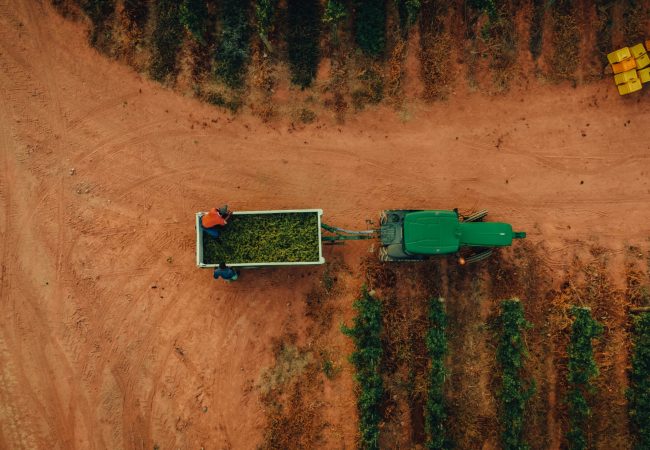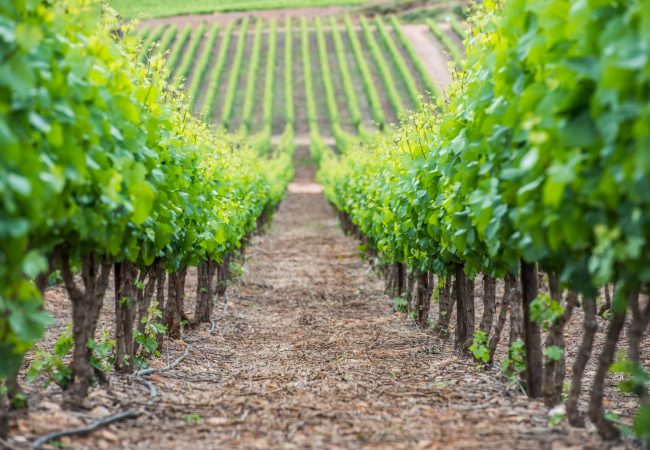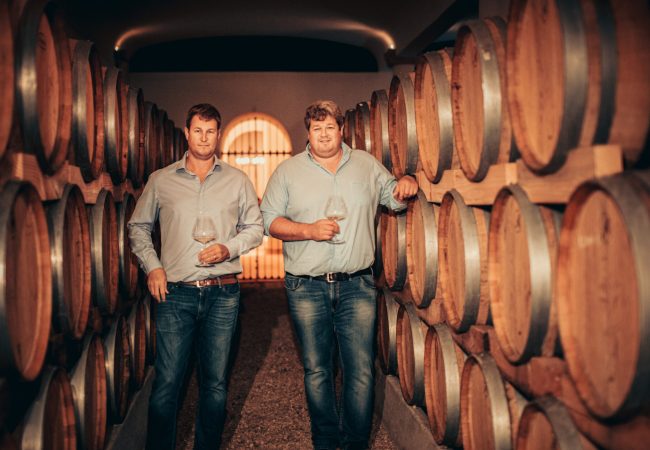THE STORY OF
De Wetshof Estate
The name De Wetshof has been synonymous with the production of fine wines in South Africa since the 1970’s. As the first registered wine estate in the Robertson Wine Valley, De Wetshof has become known internationally as South Africa’s eminent Chardonnay House due to the pioneering role it played in introducing this noble Burgundian grape to the country.
The De Wet family’s winemaking heritage can, however, be traced back to 1694 when the first De Wets arrived at the Cape and immediately made a mark on the South African wine industry.
Today, De Wetshof is one of the few third generation wine estates in South Africa. Here Johann de Wet has taken-up the role of CEO and is also responsible for De Wetshof’s vineyards, while brother Peter runs finances and logistics. Both are also actively involved in winemaking and strategy along with their father Danie.
Danie is a pioneer of noble white wines in South Africa and has also introduced superior red cultivars to the Robertson Wine Valley. A graduate of the Geisenheim Institute in Germany, one of the world’s leading centres for the study of viticulture and cellar technology, De Wet’s wines express the uniqueness of the soils of De Wetshof and meticulous attention to detail, while state-of-the-art technology ensures that the work in the cellar complements the gifts of nature’s vineyards.
With its crisp white buildings, rose bushes and jacaranda trees, the Estate has become a well-known landmark in the Robertson wine valley.

The cellar façade is based on the renowned and historic First Customs House in Cape Town, while the tasting room/administration offices is a replica of the Koopmans/De Wet House in Strand Street, Cape Town, dating back to 1791. Both buildings were designed by Louis Michel Thibault one of the most renowned architects of early Cape architecture.
Thousands of local and foreign tourists visit the De Wetshof winery each year for a taste of history and a glimpse into the future of South African wine.
DE WETSHOF ESTATE
Terroir and Sustainability

Soil
Limestone-rich soils characterise all the world’s great Chardonnay regions. On De Wetshof this limestone is complemented by shale and clay, each soil component expressed in its own Chardonnay in the De Wetshof range.

Climate
Cold winters allow for total dormancy of the vines. Spring sees warm days and cold nights, ideal for fruit development. And in summer, days are cooled by the southerly breezes off the Indian Ocean 90km away.

Grapes
Some 80% of our farm is planted to Chardonnay, with various clones matched to specific sites on the property aimed at optimal expression of terroir. Regenerative farming aims to conserve the environment while ensuring grapes of distinctive character.

Sustainability
Generous sunshine in winter and summer has a profound effect on fruit quality. Coupled with the cold, crisp winter days and the cool, breezy summers, sunlight ensures even ripening of grapes to levels further expressing this distinctive terroir.

Vineyard
The six Chardonnays in De Wetshof’s range are terroir-driven wines, their differences and distinct features the result of the vineyards planted in unique pockets of terroir selected to display signature nuances in each wine.

Winery
Modern cellar technology and the use of the finest oak barrels ensures that De Wetshof’s wines showcase the fact that we are committed to bottling the best versions of nature’s gift from the vine.
